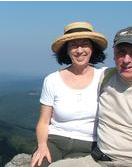
After spending a few days exploring the streets and life of downtown Paris, Bob and I were anxious to leave the hubbub of the city behind. The Palace of Versailles was our next destination and is actually located in a suburb of Paris. It is a massive complex – 800 hectares of gardens, buildings, water fountains and even a man-made lake called the Grand Canal. For both Bob and I, it was just a given that we would visit the Palace of Versailles considering its history and what happened there before and during the French Revolution.
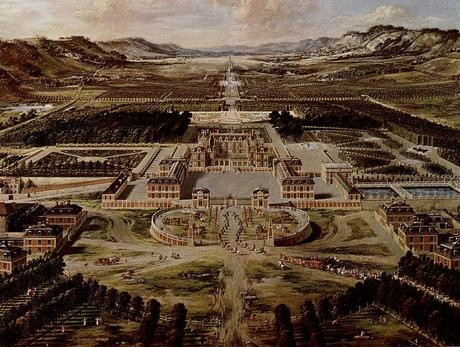
This historical painting gives you some idea of what the Palace of Versailles looked like in 1668, back when it first became the home of the French Royal Family. In those days, until the French Revolution, all power in France emanated from this country Palace that housed thousands of courtiers, government employees and all those it took to run a Royal Court. Surprisingly, most of what you see in this painting still stands today, and we would be walking and cycling amongst it during our visit.
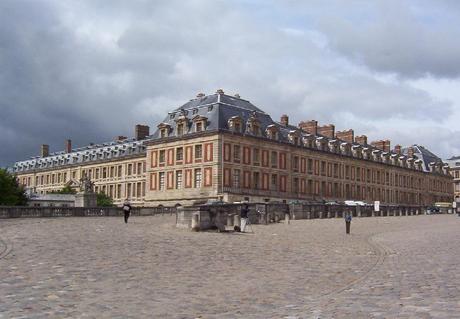
One thing I must point out is that it is key to wear comfortable shoes when you tour this Palace and its endless property. We found ourselves walking on a lot of tiled floors, stone walkways, and cobblestone surfaces like those in the Royal Courtyard, seen in our picture above.
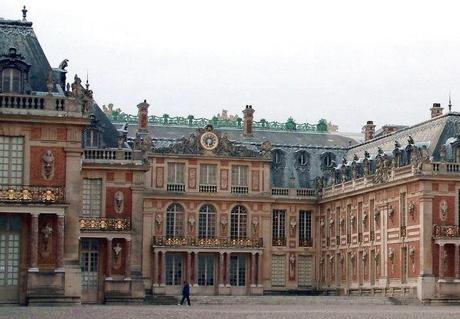
It was hard for us to comprehend that all of these ornately decorated buildings were built at the command of one person, the King of France. As we walked around the place, we really began to understand why this place had proven to be one of the biggest causes of the French Revolution.

First off, King Louis XVI and his Queen, Marie Antoinette, much like some of today’s rulers around the world, decided to live a life of unbelievable and endless extravagances, completely ignoring the hardships of their common people. The supposed reaction of Marie Antoinette to the deaths of millions of her people from starvation was simply to say, “Let them eat cake”. The widespread starvation occurred because of massive crop failures of wheat, which was caused by climate change or what is still called “The Little Ice Age” of 1693. Anyway, we all know the response to Marie Antoinette’s declaration.
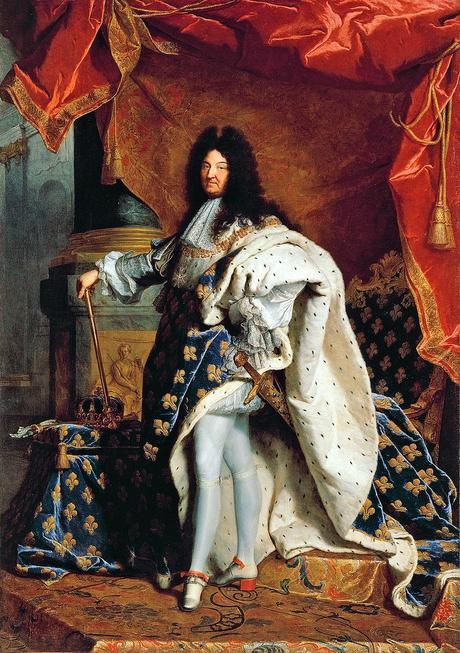
The Palace of Versailles was built by the Sun King, King Louis XIV. He had a grand life at Versailles, and made it the center of all power in France. 107 years later, however, his grandson, King Louis XVI, and his wife, Queen Marie Antoinette, brought about the end of that Royal Power and landed up being taken from these grounds to be executed in Paris.
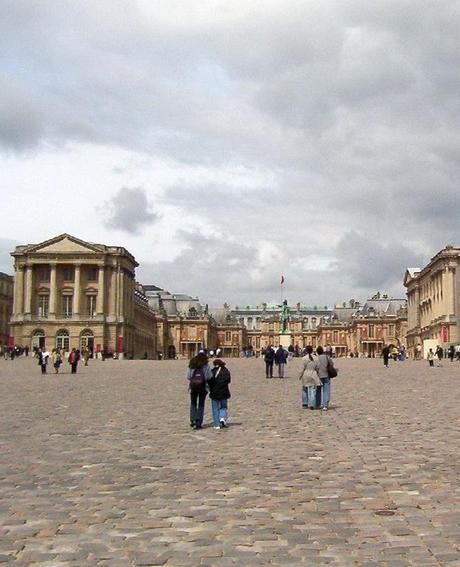
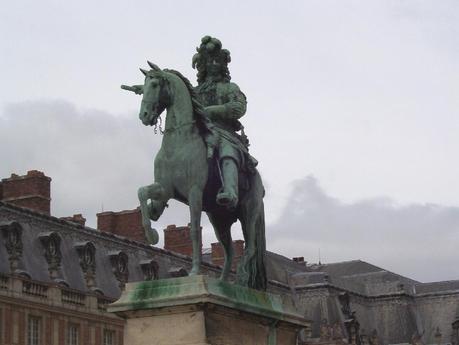
A dignified statue of King Louis XIV, the former Sun King, occupies a prominent location in the courtyard in front of the center block of Versailles. With a cloudy sky above us, King Louis’ countenance seemed ever more austere.
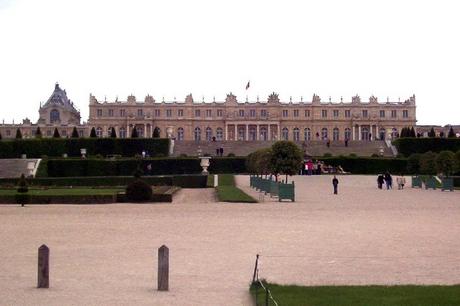
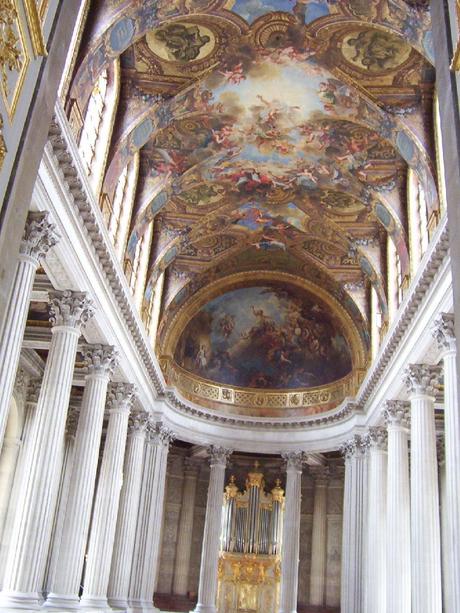
One of our first stops inside the Palace was the Royal Chapel. This was the place where the royal family came every Sunday to take part in Roman Catholic mass. It was also there in the Chapel that Marie Antoinette married the future King Louis XVI, and would herself one day become Queen of France. The beautiful paintings on the vaulted ceiling were breathtaking.
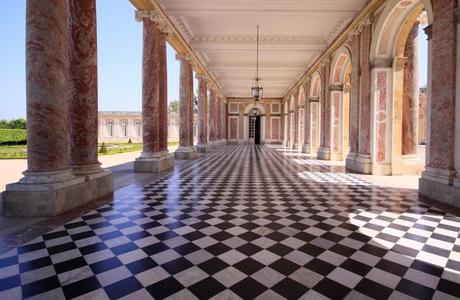

One feature that really impressed us, both inside and outside the Palace, were the black and white checkerboard floors. When Versailles was built, the architect decided to use Black and White checkerboard floors in many parts of the buildings to evoke the imperial splendor of ancient Rome. We came upon floors like these in both the The Grand Trianon and the Palace of Versailles. The tiles were made out of marble and stretched down endless corridors including the palace’s main hallway.
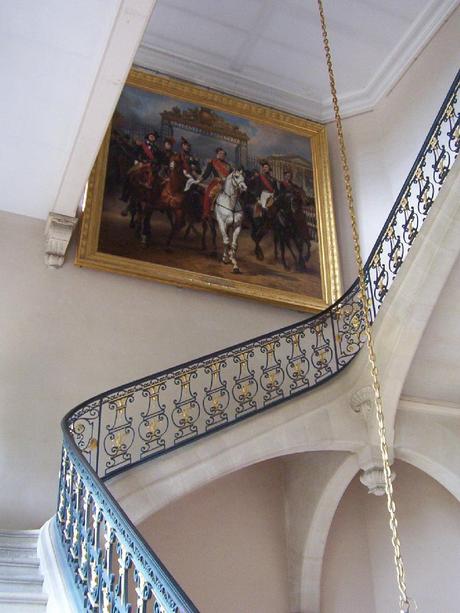

Everywhere we turned in the palace, decorative works of art astounded us.
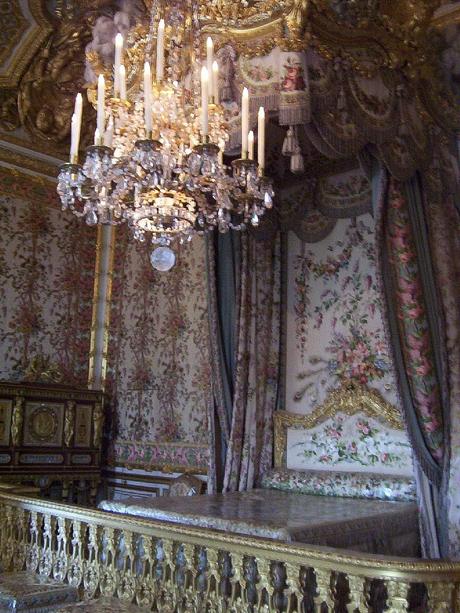
With so many different rooms to visit, and only so much time, we decided to visit Marie Antoinette’s bedroom. We were told that this room was where Marie gave birth to her 4 children. In fact, this is one of the biggest rooms in the whole Palace because the queen was expected to give birth with a public audience. When Marie Antoinette’s first child, Marie-Therese Charlotte, was born in this room, 200 Courtiers were present. On the day of Marie-Therese’s birth, major confusion occurred, and King Louis XVI ordered that all future births would be in private.
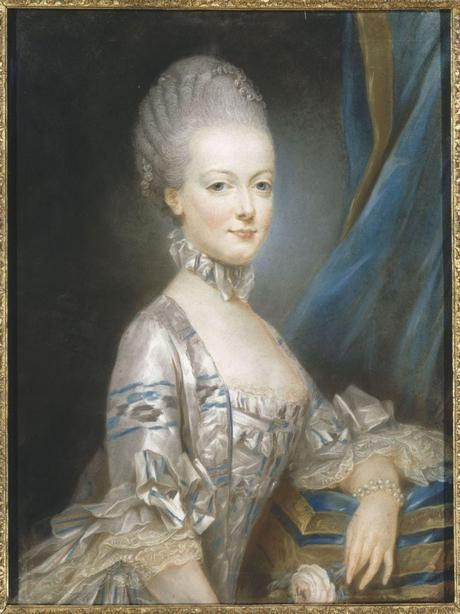
This is a painting of Marie Antoinette at the age of 13, and it was this picture that was sent to her future husband, King Louis XVI, so he could see what his future wife looked like before he met and married her.
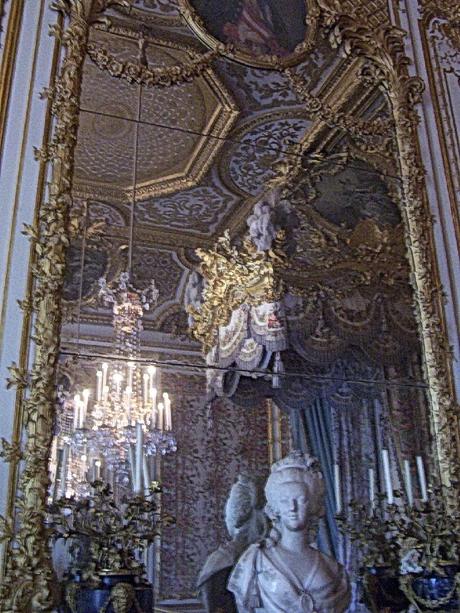
In a world where walls and ceilings are painted with actual gold, I took this picture of the massive mirror beside Marie’s bed. The statue sitting on the table in front of the mirror is a bust of Queen Marie. On October 6th, 1789, Marie Antoinette had to escape from rioters who invaded her palace, and it was to this room that she fled and hid.

Not far from the bedroom of Marie Antoinette, Bob and I entered into what is considered one of the most famous rooms in the world, The Hall of Mirrors. The Hall is filled with 357 mirrors, 17 glass doors, marble walls, massive crystal chandeliers and painted frescoes on the ceiling. This was a place of immense glitz and glitter with shimmering reflections everywhere we turned our eyes. On the day we took this picture, there were very few people in the Hall, so Bob and I actually decided, on a lark, to perform a waltz where, in bygone eras, royalty came together for costume balls and other major events. It seemed apropos, made our visit memorable, and even captured applause from passersby. Today, the Hall of Mirrors is still used by the French Government for major state events.
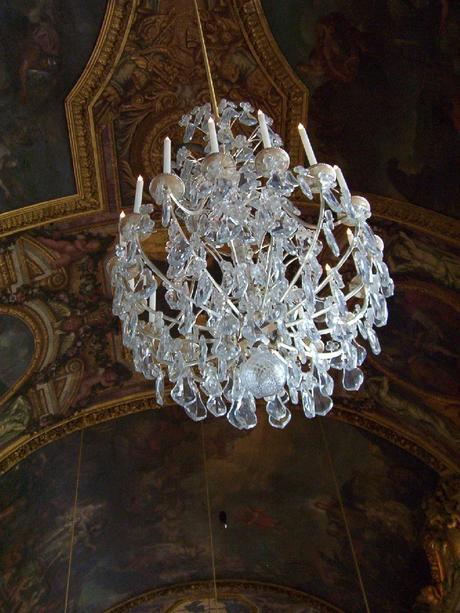
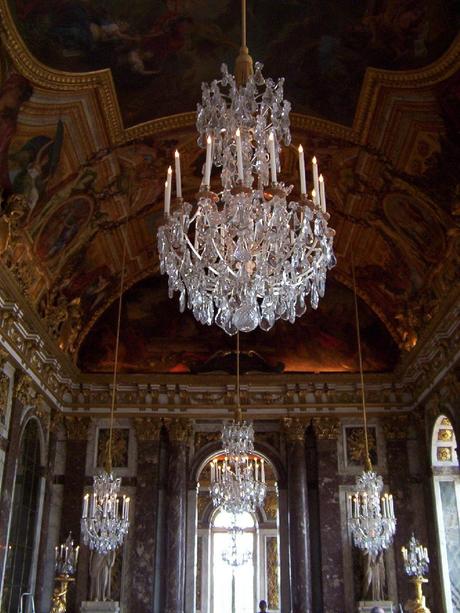
These are but 4 of the 17 large chandeliers that hung above our heads. Each one is made of solid silver. At one time, solid silver tables and chairs sat beneath the magnificent chandeliers, but those were melted down and the silver sold to help fund the cost of fighting wars in 1689.
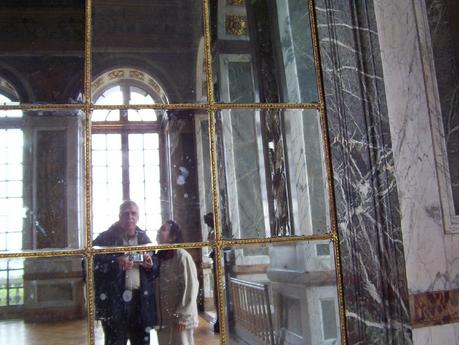
Here is a mere reflection of Bob and I in the Hall of Mirrors. Just imagine if we could somehow transport ourselves back through time to see all the endless memories that have already been reflected in these over-sized looking glasses.
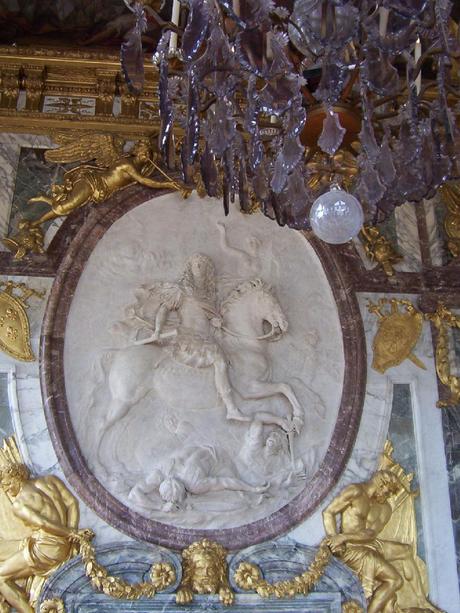
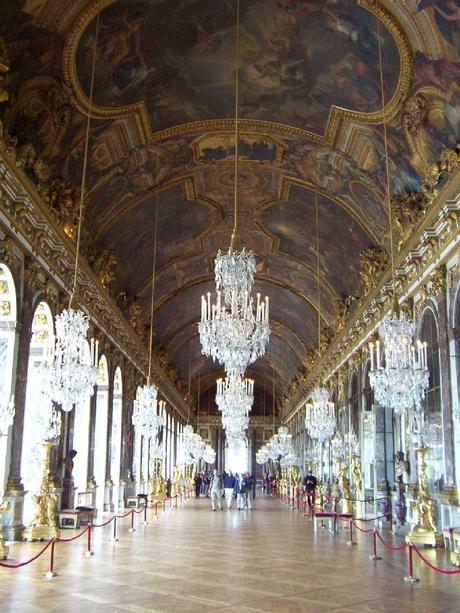
Our quick dance completed, we dallied a while longer to revel in the grandiosity of the space.
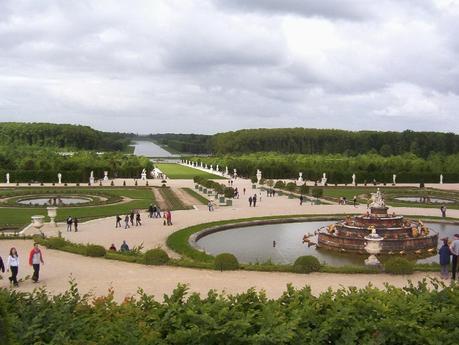
Bob and I exited the Hall of Mirrors into the gardens and parkland of the Palace of Versailles. A sea of manicured lawns, decorative ponds, unique statues, tidy hedges and broad promenades spread before us. It is massive! The estate is actually bigger than modern day Paris and the island of Manhattan together. Needless to say, there wasn’t time for us to walk the whole 19,262-acre site!!!
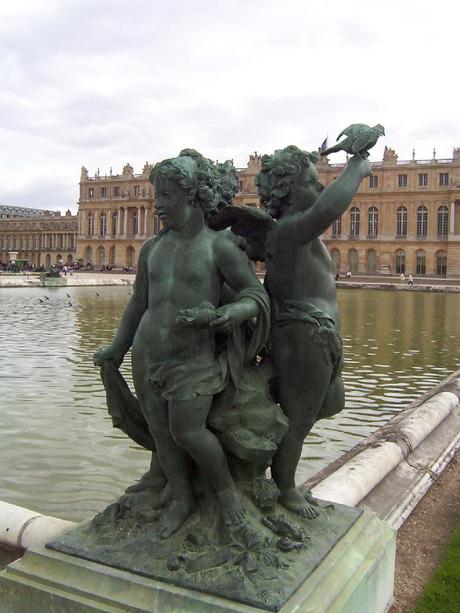
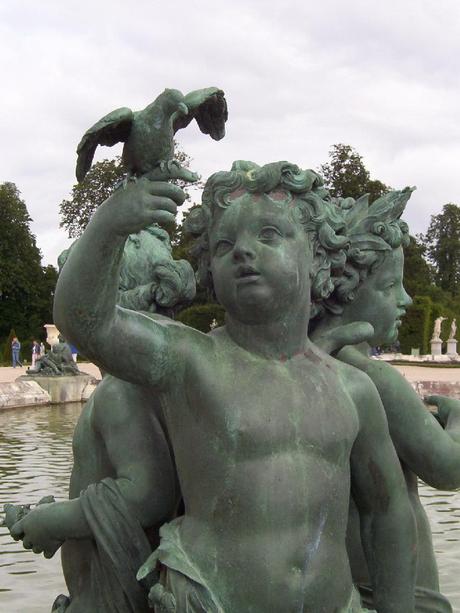
One of the first statues we admired, just outside the Palace, was this detailed bronze rendition of a Boy Holding a Bird. The sculpture was very endearing. Not sure what kind of bird, however.
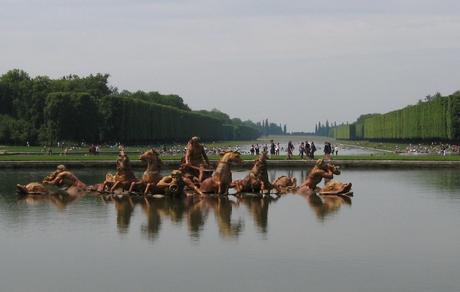
At the head of the Grand Canal, we found this fountain, which is called the Fountain of Apollo. The sculpture in the middle of the fountain was commissioned by King Louis XIV, the Sun King. As you see, it depicts, as no surprise, the Sun-God Apollo.
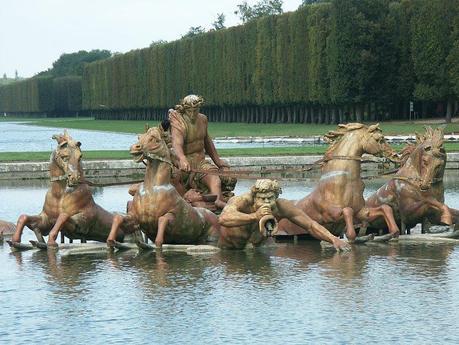
Surging from the depths of the water is Apollo driving his chariot across the supposed sky. What a powerful and stirring impression it creates.
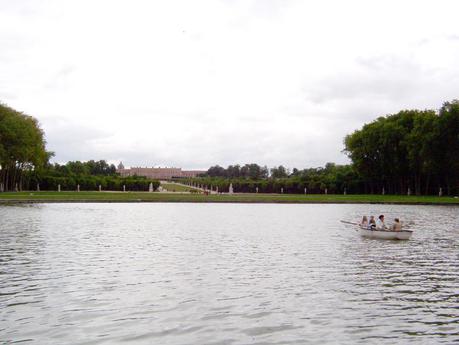
Looking across the Grand Canal, back towards the Palace of Versailles, gives some sense of the enormity of the extensive manor and its property.
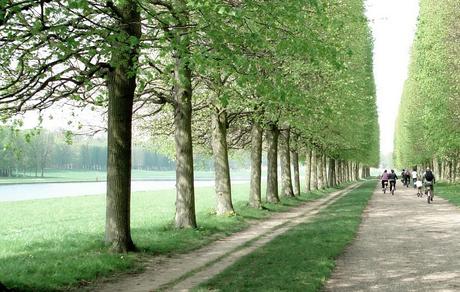
To help us get around more quickly, and also to save our legs, Bob and I rented a couple of bikes. Rowboats were also for hire near the Grand Canal.
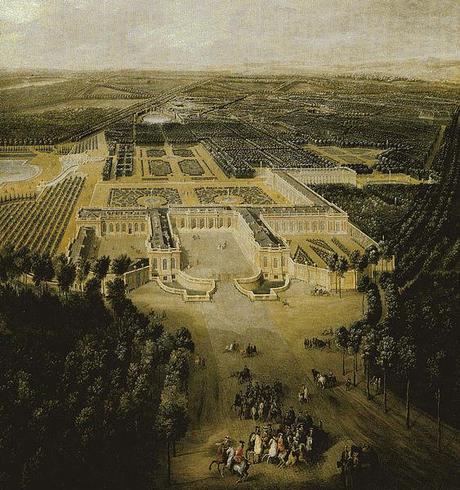
There are many different buildings that you can visit in the park of Versailles. We rode our bikes first to the Grand Trianon Castle that is featured in this 1700′s painting. It is located on the northwestern side of the property and has a very interesting history.
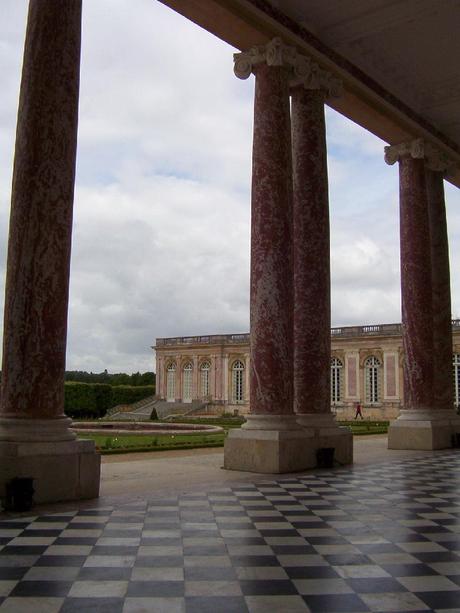
Having parked our bikes and locked them up, we then took time to walk amongst the pink columns of the Grand Trianon Castle. This small castle was where many of France’s Kings and Queens actually lived when spending time at Versailles. Most of them preferred to live in this small castle rather than the Palace of Versailles. The main reason was that, here, they could limit their company and do as they pleased with no need to live up to the forced etiquette that was part of the Royal Court world back at the Palace.

What a calm and soothing environment in this world of soft pink marble.

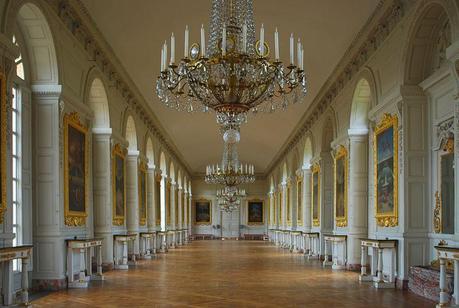
Inside, we found, yet again, a large accumulation of paintings and over-sized chandeliers, and a room, given its color, called the Yellow Room. In 1774, King Louis XVI decided to give this castle to Marie Antoinette as a gift. Marie landed up using this banquet hall as a place to host private theatrical productions and also a place to showcase her growing private collection of art.
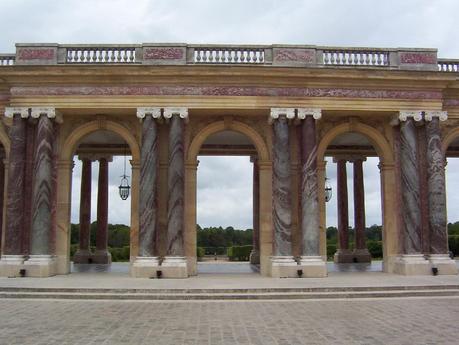
Bob and I wandered amongst the gardens that surround Grand Trianon Castle, pausing to ponder what once took place there. With the rise of the French Revolution, Marie Antoinette’s theatrical productions came to an abrupt halt. Following the beheading of Marie Antoinette and King Louis XVI in Paris, this castle and its pink arches were left abandoned. Years later, Emperor Napoleon Bonaparte decided to reopen it and make it his personal home. One can only assume that Napoleon once walked amongst these pink columns making decisions that proved both successful and brutal in his own lifetime.
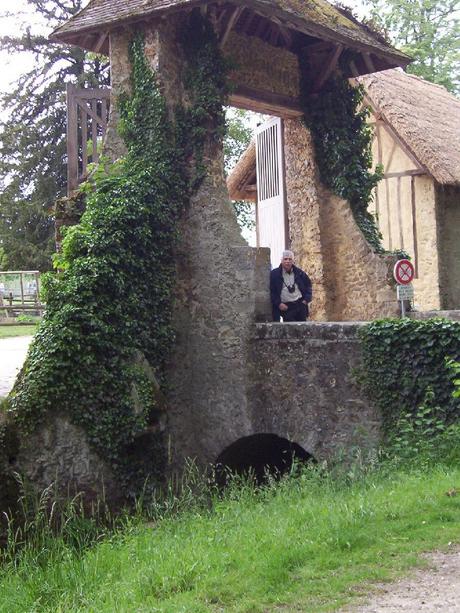
One of my favorite sections of the palace property is the small hamlet of “Hameau de la reine” (The Queen’s Hamlet). Bob took time for a break on a small bridge that leads into the hamlet, which is located in the gardens of the Petit Trianon. It was in these gardens that Marie Antoinette, in 1784, decided to have built a small village just for herself. She then, more or less, became a peasant farmer when visiting her village.

Today, 9 of her 12 original cottages still stands. Amongst them is this one called the Moulin, the watermill cottage.
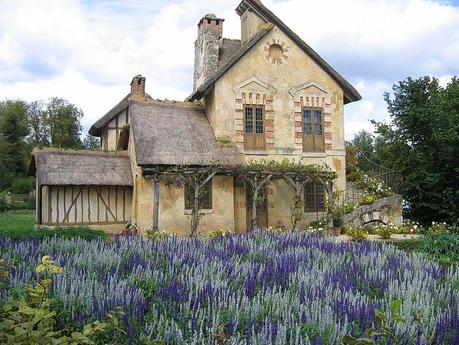
This is a view of the gardens behind the Moulin.
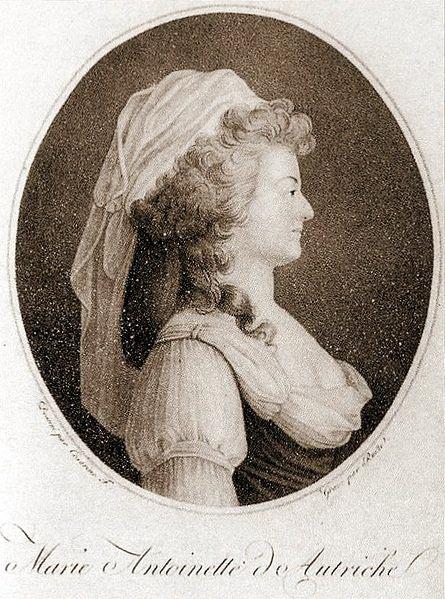
In this old drawing, we can see how Marie Antoinette dressed when playing the role of a peasant in her village. According to what we have learned, Marie was fascinated with “back to nature” thinking and philosophy. Prior to her execution, she also studied the culture of the Incas of Peru. In her time, Marie was consumed with the Incas’ worship of the Sun. Ironically, Marie Antoinette’s thinking, and the little peasant village, would bring her much grief when the angry French public learned all about it.
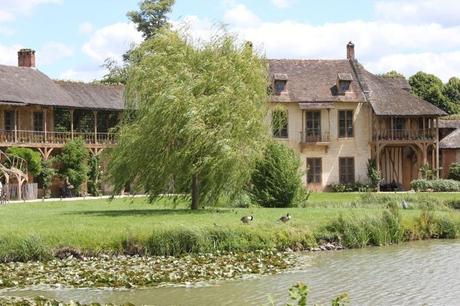
As we stood there, with the wind blowing through the trees, and ducks loitering by her pond, it was hard to believe that Marie Antoinette once lived in the idyllic cottage hidden by the willow tree.
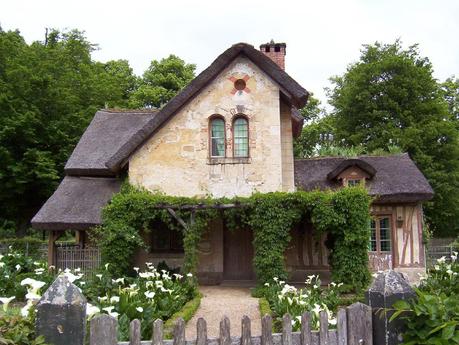
In her small village, Marie had several different cottages, each with its own garden. She even arranged to hire a full-time farmer to operate a working farm beside her village. I was totally enamored with the whimsical, charming cottages. They seemed akin to dollhouses, and I imagine that Queen Marie had fun playing house in their quaint tiny confines.

The exterior elevations of the fanciful cottages were each unique and nostalgic of a simpler pastoral era.

Marie had the “The Marlborough Tower” built on the edge of a pond by one of her farmer’s fields. In fact, she made sure that all the food served at her cottage table came from the fields of her village.
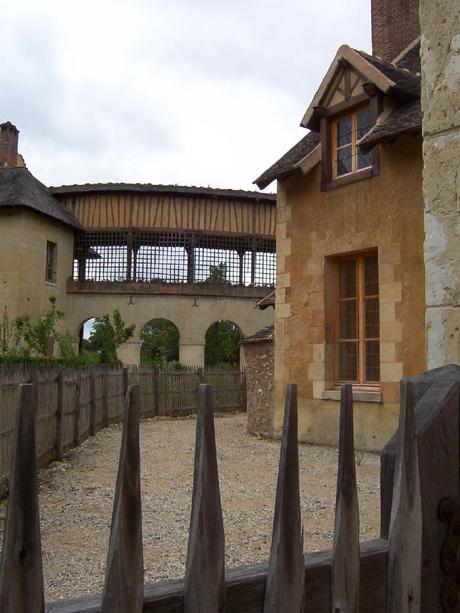

Here is an entrance gate into one of the many gardens. I took time there to soak up the simplicity and ambience of a time-gone-by. For me, the world of Versailles will not soon be forgotten.
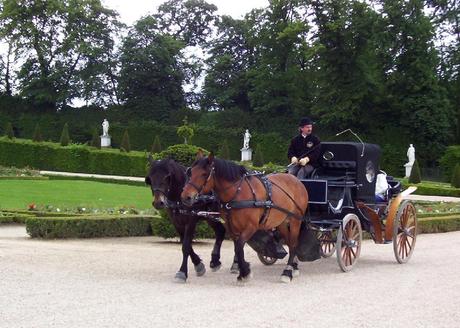
Versailles is a place where the past comes alive, and yet time seems trapped in so many ways.
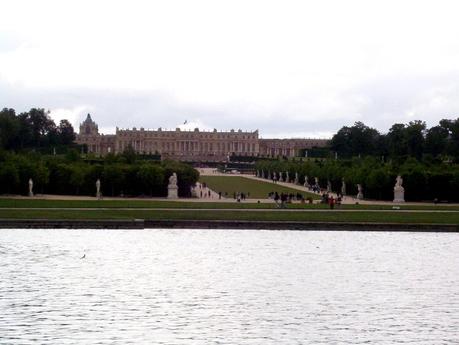
A trip to France just wouldn’t be complete without seeing this monstrous and majestic place, and reflecting on what it all means to the past and the present. Visit the official website Chateau De Versailles for information about ongoing happenings at the Palace.
Frame To Frame.ca
